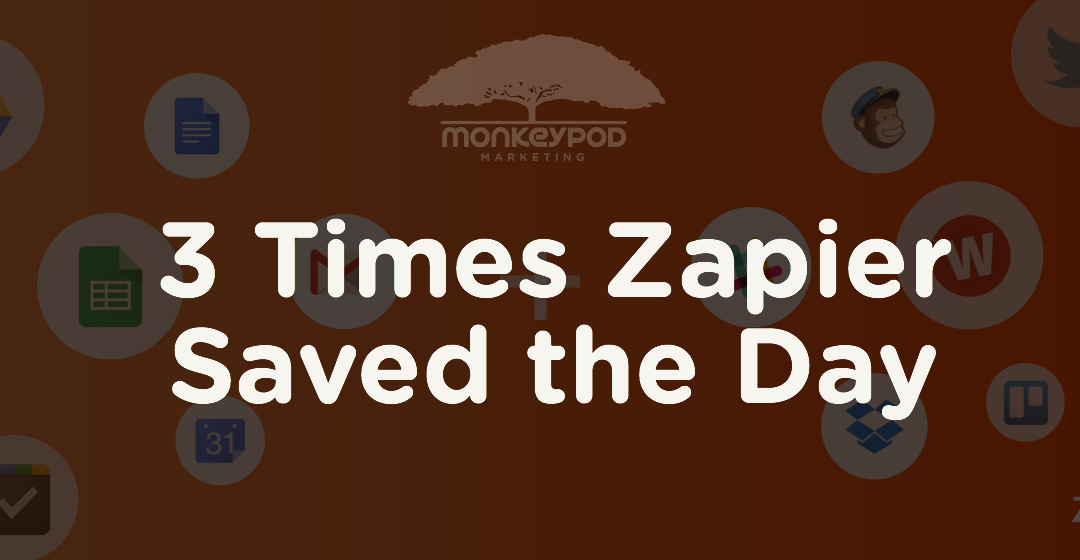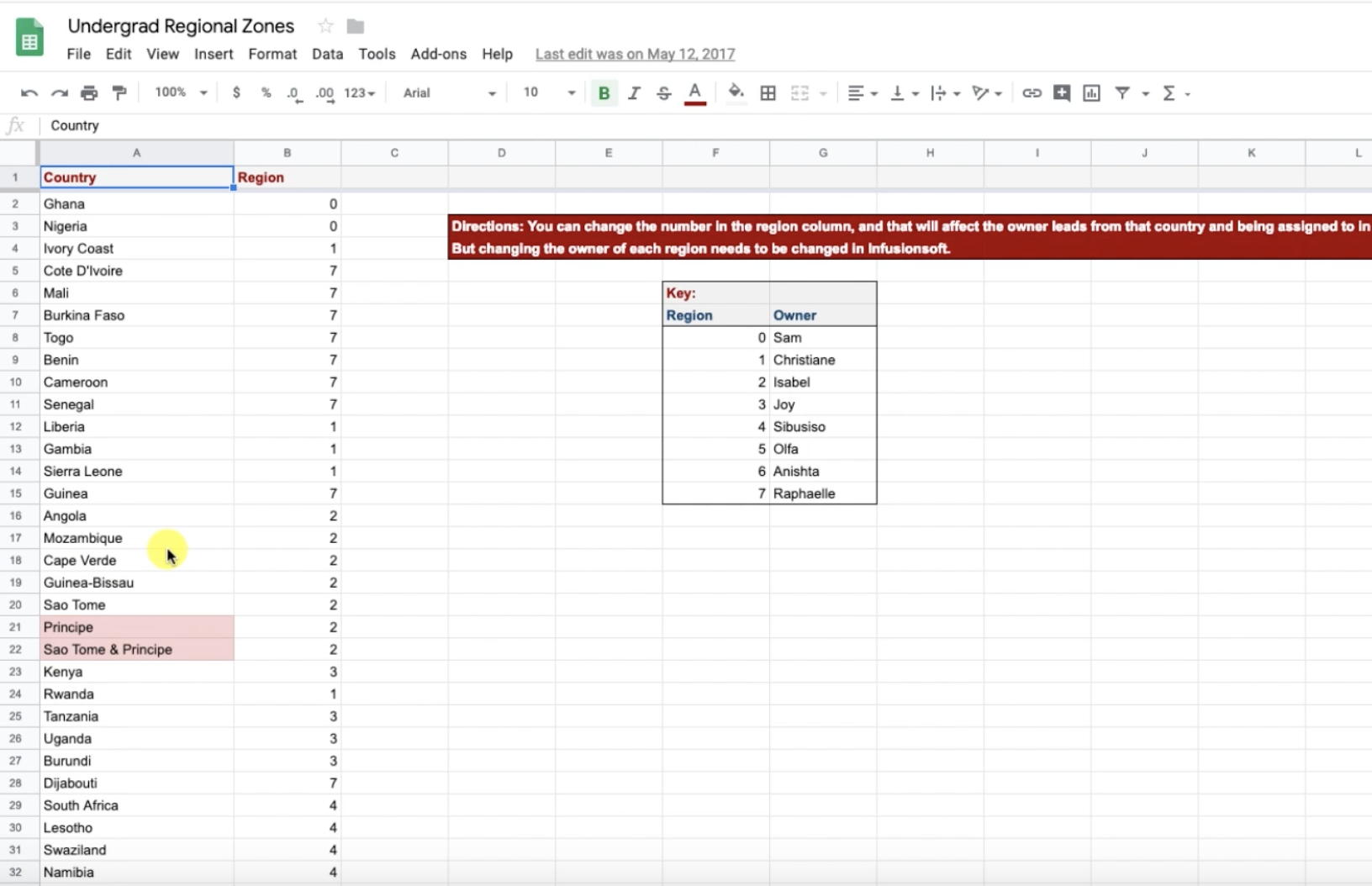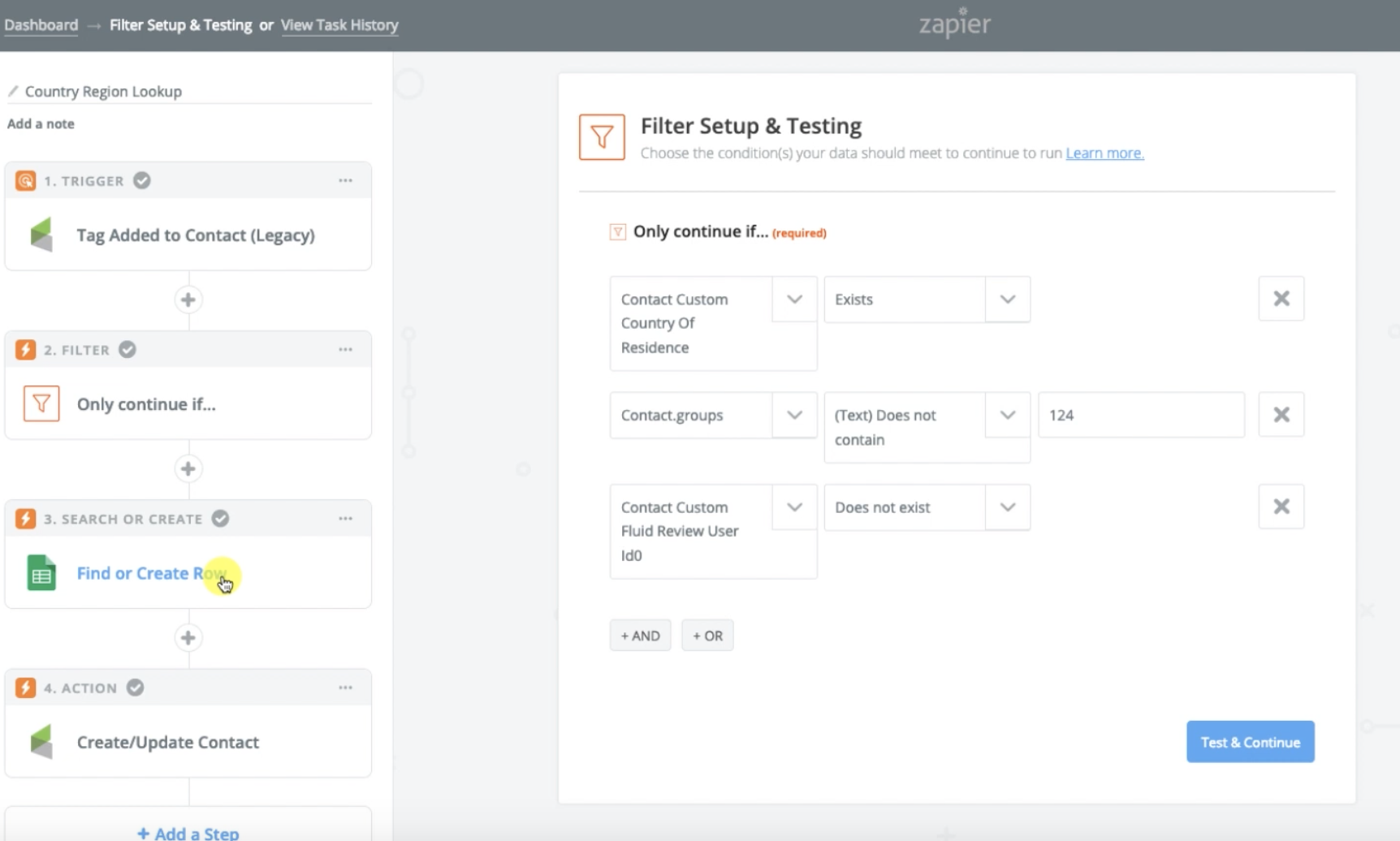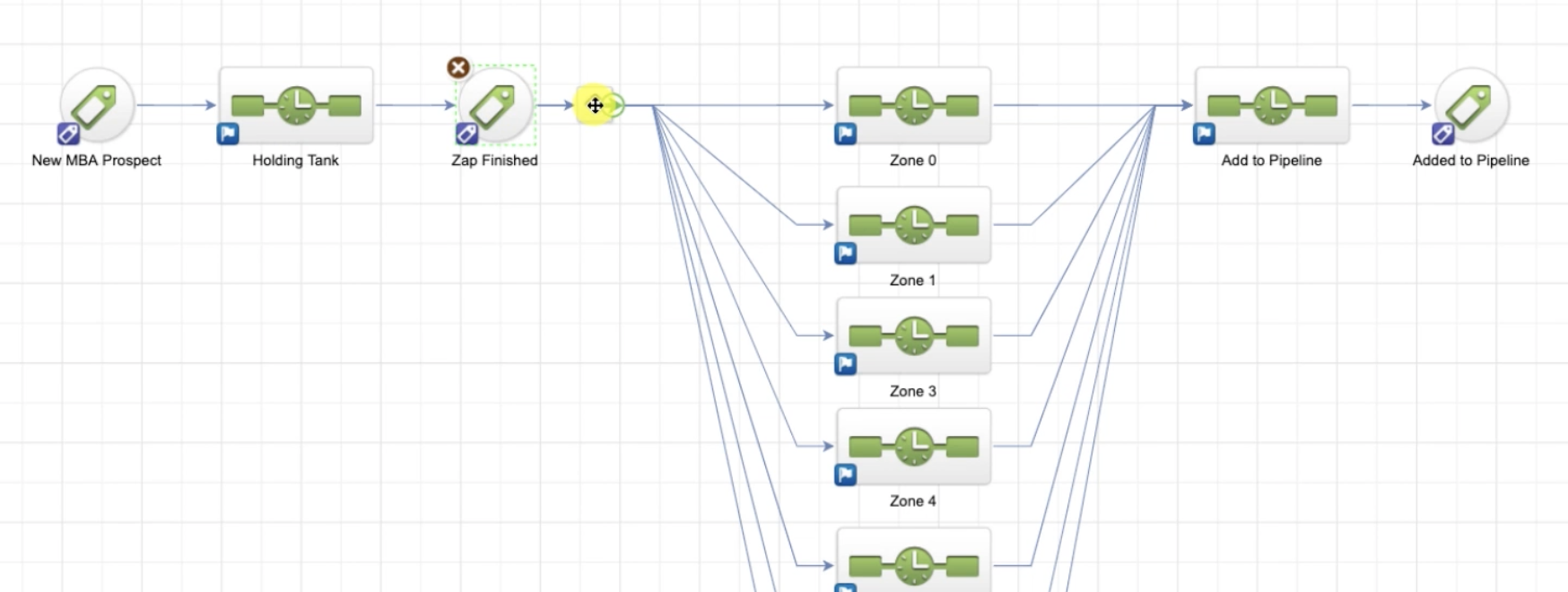When I worked at Keap (formerly Infusionsoft) I was often asked to recommend third party tools that would solve the problems that Keap didn’t natively address, but if I’m being honest, I didn’t really use any of those tools first hand.
I avoided using them because I was representing the Keap brand, and I didn’t want to play favorites by recommending one tool over another.
So, since leaving Keap I’ve found myself gradually adopting these tools that I avoided for so long, and each time they make my life easier, I kick myself for waiting so long.
Anyway, it’s been about 18 months since I started Monkeypod and I’m proudly using PureChat, PlusThis, LeadPages, WebinarJam and a few others. (So proudly in fact, that those are all affiliate links right there. So, go nuts.)
But this blog post isn’t about those tools, it’s about Zapier.
You see, I had heard the name Zapier thrown around for so long, I was sort of embarrassed to say that I hadn’t really used it. Fundamentally I knew what it did, but I really didn’t quite “get” it. Until recently.
At it’s core Zapier is a connector. It allows two systems to pass information back and forth.
Without Zapier there are probably other ways to make these systems talk, but it’d be massively complex. Zapier makes it easy. They’ve created the connections necessary to allows hundreds of different tools to speak to one another, and Keap is one of those options.
At any rate, to help illustrate how useful Zapier has been, I want to share 3 examples from the last 6 months where I was in a sticky situation, and Zapier saved the day for me, and for ALU.
Example 1:
Scenario: Some of you know that I do some work as a consultant for a school in Africa, The African Leadership University (ALU). There’s a remote team of 7 regional reps who are all responsible for coordinating events in a particular part of the continent. These reps host events locally to talk with prospective applicants for the school, and attendees register on a sign-in sheet. After the event the reps are responsible for uploading this information to a shared google sheet so that their manager can easily see how many leads came from each event, and a handful of other details about that prospect. The problem is that these reps aren’t all users on the Keap account. So they can’t very well add them straight to Infusionsoft, I mean, they could fill out a form for each one, but then they can’t query the data or run reports on it.
Solution: Zapier allows you to sync Google Sheets and Keap. So, when a new entry is added to our master google sheet, it automatically creates (or updates) a contact in Keap. Zapier allows you to choose which columns you want mapped to which Keap field, it checks for existing contacts via email address so you don’t end up with duplicates, and it also lets you apply a tag if you want to run specific actions. Zapier officially saved us from having to purchase an additional 7 Keap user licenses (That’s $175/mo in savings at an average user license cost of $25/mo).
Example 2:
Scenario: At ALU, we have leads coming in from a variety of channels, and when these leads show up we need them to be assigned to one of 10 teams based on their country. Each team would round robin new leads between the 1-3 owners on that team. But because there are 54 countries in Africa (now you know), this was going to be a relatively complex decision diamond. And if those countries>teams>owner combinations needed to change, it would be difficult to update the round robins, and the decision diamonds, etc.
Solution: Instead of creating the decision diamond with 54 branches, we first decided to create a simple Google Sheet with all 54 countries listed, and then in the column next to them we added the “Zone” number.
Then we used a Zap so that when a new lead is added, if they have a country, it checks that google sheet to see what “Zone” that country is assigned to, then it puts the Zone Number into a custom field, and we use that Zone number to route them into a sequence where we then assign that lead to the appropriate team.
Now our decision diamond has 10 branches instead of 54, and the spreadsheet is much easier to update in case we need to rearrange how these leads are being assigned.
Example 3:
Scenario: ALU also uses Zendesk to track communication and customer service inquiries. But they use one ZenDesk account to manage their undergraduate questions, as well as inquiries regarding their School of Business. However, they use separate Infusionsoft accounts for their undergraduate programme, and their School of Business programmes. So the challenge became “How do we get the ticket information and details from Zendesk mapped to the appropriate contact in the appropriate Infusionsoft account.
Solution: Whelp, Zapier saved the day again. We were able to design a zap that is initiated when a new ticket is created in Zendesk, the first thing it does is check the School of Business Infusionsoft account to see if it can find a contact with that email address. There’s a filter in this zap so that it only proceeds IF it finds someone, and the next step is to update the contact with a tag, as well as add the ticket details from Zendesk to a custom Text Area field, so any people working on that contact can easily see their most recent ticket details listed on the contact record.
I’m honestly not sharing these examples to brag. Heck, you may have read these examples and immediately spotted areas where I could clean them up a bit. My hope is that you’ll get a few ideas and maybe something will click where you see a way Zapier can save you time or money.
Oh, and how cool is this, Zapier actually has a bug bounty program. If you find and report a vulnerability in their software, they freaking write you a check. That’s an impressive statement for a company to make.
Hope this was useful! I’d love to hear your thoughts on Zapier, or cool ways you’re using it for your own business.









Thanks for this article, Greg. Great to hear about different ideas around using Zapier and Infusionsoft.
Just the other day I discovered you can use Zapier to take the info from a lead acquired through Facebook Lead Ads, and use that to create an Infusionsoft contact (https://zapier.com/app/editor/template/10181).
Pretty cool stuff!
Hope all’s well.
Cheers,
Grant
Yeah! I think I saw Jordan talking about that in his mastermind call recently. If anyone else wants to follow along, here’s the recording: http://help.infusionsoft.com/mastermind/facebook-lead-ads-and-infusionsoft-v2
Thanks, as always, for reading Grant! Cheers.
The more and more I use Zapier that more I see its potential. So powerful.
Your webinar inspired me to set up a recent Zap. I have shipment tracking data sent from ShipStation (after a shipping label has been printed) to a Google Sheet. Then the Google Sheet triggers an email to be created and sent to the customer that includes their USPS tracking code and link to track their package. So far working great!
Thanks!!
Awesome! So glad to hear it Doug.
Great post. I LOVE seeing how others are using tools. It always gives me ideas on how I can use them. 🙂
I too have been using external things more and more this year. I recently used Zapier to connect Infusionsoft and JVZoo as well as pass people between multiple apps.
JVZoo connects to GetResponse but not to IS. And my client wanted to use JVZoo for a launch they were doing to take advantage of the built in Affiliate opportunities as will as the automatic profit sharing since it was a JV (lol)
But we needed the people to also be in IS since it was a 30 day program with emails and reports and so one. Plus wanting to be able to continue to build the relationship once the program ended.
So we created 1 zap that took anyone added to a specific list in GetResponse and placed them in IS and applied a tag. That tag then triggered their campaign just like a direct IS sale would have.
The next thing we needed to do was share the contacts between both apps. (2 people were working together and each had their own IS app) It was very clear to the buyers that 2 people were joining for the program so no worries about “sharing the list”. But we also wanted to make sure that each of their individual promotional emails were not going to people who had already purchased.
So I set up a second Zap that when a specific tag was applied in the first app it took that person and added them into the second app and applied a tag so a report was generated for the second person so when he wanted to send out a promo he could de-select those people.
It worked wonderfully!
This was the 4th time they had run this program and the first time all of those things were automated. In the past there was a TON of export this list and import it here manual stuff going on. This time it all just happened….automatically.
In fact our biggest issue was JVZoo not sending people to GetResponse 🙂
Brilliant! I love hearing solutions like this. I’ve been using Zapier to move leads between Infusionsoft accounts as well – in my case it’s between the Undergraduate Program and School of Business for a University. So, it’s the same entity, but they use different Infusionsoft apps to keep things cleaner – and Zapier helps keep things organized.